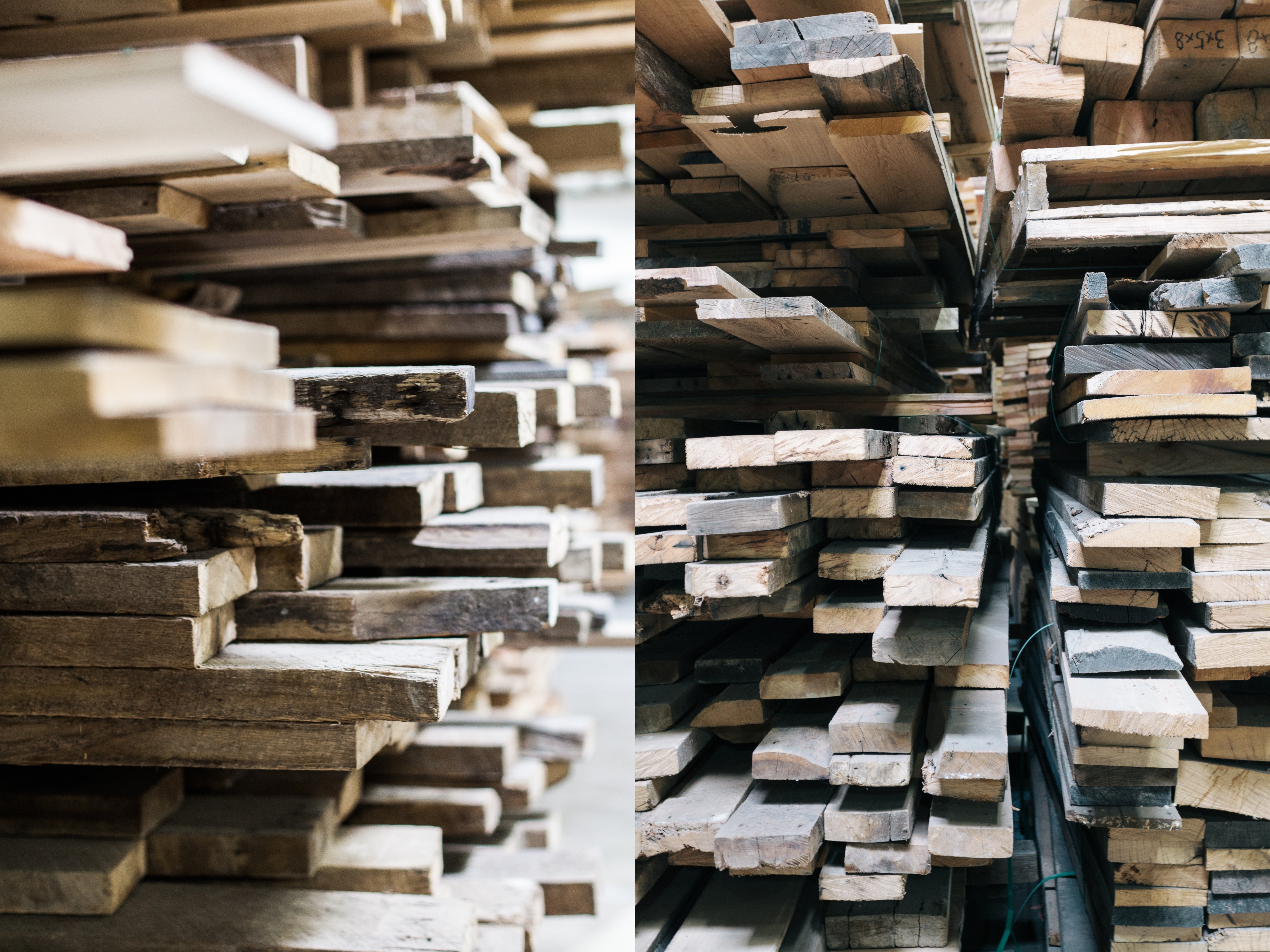That dreamy headboard, bold backsplash, or rustic wood wall paneling you hope to DIY using reclaimed wood could either be a hit or miss depending on where you snag the wood. While the buzzword of reclaimed wood is everywhere, quality reclaimed wood is in short supply, and the wood you manage to source may be flawed, or worse, fake. Read on to find out why quality reclaimed wood has become so elusive and how Stikwood can help you find the treasure you’re searching for.

The tricky business of finding quality reclaimed wood yourself
Why is quality reclaimed wood so hard to find locally? The answer lies in where we find the material. Unlike freshly milled wood derived from fresh felled trees that are cut into logs at a sawmill and then shipped to the market, reclaimed wood is lumber salvaged from old wooden structures for reuse.
With a little clever sleuthing on the web, any resourceful DIYer can find recycled wood at sites like barns, warehouses, shipyards, and rebuilding centers. But there’s no guarantee of its quality; the wood will likely be riddled with nails, rotted, contaminated or otherwise structurally compromised.
The soaring popularity of reclaimed wood in home interior applications has also led to a rise in dealers purveying variations of reclaimed wood that haven’t been certified by the Forest Stewardship Council® (FSC) as authentic recycled wood. This means that the wood you find in the traditional aftermarket may not be real reclaimed wood after all.
The “gotchas” of independently-sourced reclaimed wood
Successfully sourcing quality reclaimed wood on your own requires a keen eye and an ability to suss out legitimate, safe recycled wood from fake or subpar wood. Whether you choose to source recycled wood from its original habitat or from a reseller, keep an eye out for red flags that signal the wood you found isn’t up to snuff.
Inauthenticity: Only obtain reclaimed wood from trustworthy suppliers and strive to buy FSC® Certified 100% recycled wood. Not all wood that is advertised as reclaimed is guaranteed to be authentic. In some cases, newly milled and distressed wood planks may be passed off as reclaimed by the use of misleading labels like “barn wood finish”. FSC® Certification is a sure way to know you’re not getting a fake. Keep in mind that the odds of finding FSC® Certified recycled wood on a casual trip to common sites where we find reclaimed wood can be slim. It can take precious time and legwork to find a local lumber dealer with FSC® Certified wood on hand.
Pollutants: Always ask the staff on any site offering recycled wood about any preservation treatments the wood received before it arrived. If the wood was treated with preservatives or finishes that emit high levels of volatile organic compounds, installing the wood could introduce these pollutants into your home. If limited information is available about how the wood was treated in the past, consider acquiring the wood elsewhere.
Pests: If you spot holes or other structural abnormalities in the wood, this could be a sign of pests that warrants fumigating the wood before bringing it into your home. If ignored, pests hiding in the cracks and crevices of reclaimed wood planks could take up residence in your home once installed. Consult a pest professional if you need help identifying or fumigating independently-sourced reclaimed wood you suspect contains pests.
The Stikwood difference

When you choose Stikwood, we take the burden off your shoulders of sourcing reclaimed wood and investigating its quality, authenticity, and safety. We offers the following advantages over independently-sourced reclaimed wood:
Authentic weathered wood: Stikwood only distributes 100-percent-real, pest-free, FSC® and SCE® Certified reclaimed wood products. SCS® Certification attests that our wood has undergone rigorous auditing and testing to achieve the highest standards in materials and manufacturing. This quality in manufacturing begins with where we find reclaimed wood. All of our products can be traced back to responsibly-managed forests across the U.S. In the process of transforming new wood into Stikwood, the sustainable woods are finished with European oils or lead- or VOC-free paints. These low-emission finishes beautify walls and other surfaces while keeping your home free of toxins.
Lightweight construction and easy installation: The wood planks you obtain from a local lumber yard are typically thick and hefty, making them a burden to lift, let alone install. The unique ThinPlank construction of Stikwood means that each plank is only 3/16 of an inch thick and up to 40% lighter per square foot than an average wood plank. This affords not only a lower carbon footprint but a fuss-free installation. The only preparation needed is to prime or paint the surface you intend to apply Stikwood and then dry-wipe it clean. Simply cut the reclaimed wood wall panels to size with a miter saw or miter box, remove the adhesive backing from the panels, then stick them to the intended surface. Keeping a J Roller handy will ensure that the panels adequately adhere to the surface for a picture-perfect result.

Featured Style: Reclaimed Sierra Silver
Delivered right to your door: In the time it takes to scrounge around for reclaimed wood at a salvage yard, inspect it, and lug it back to your digs, you could have already finished installing a stunning Stikwood wall or headboard. This is because ordering online from Stikwood allows you to choose from products in a variety of styles and colors and have them delivered right to your door. The sooner you can get your hands on Stikwood, the sooner you can create memorable vignettes for every room in the home.
Don't forget to sign up!
Join our newsletter to stay informed with new product releases, designer spotlights and promotions.

